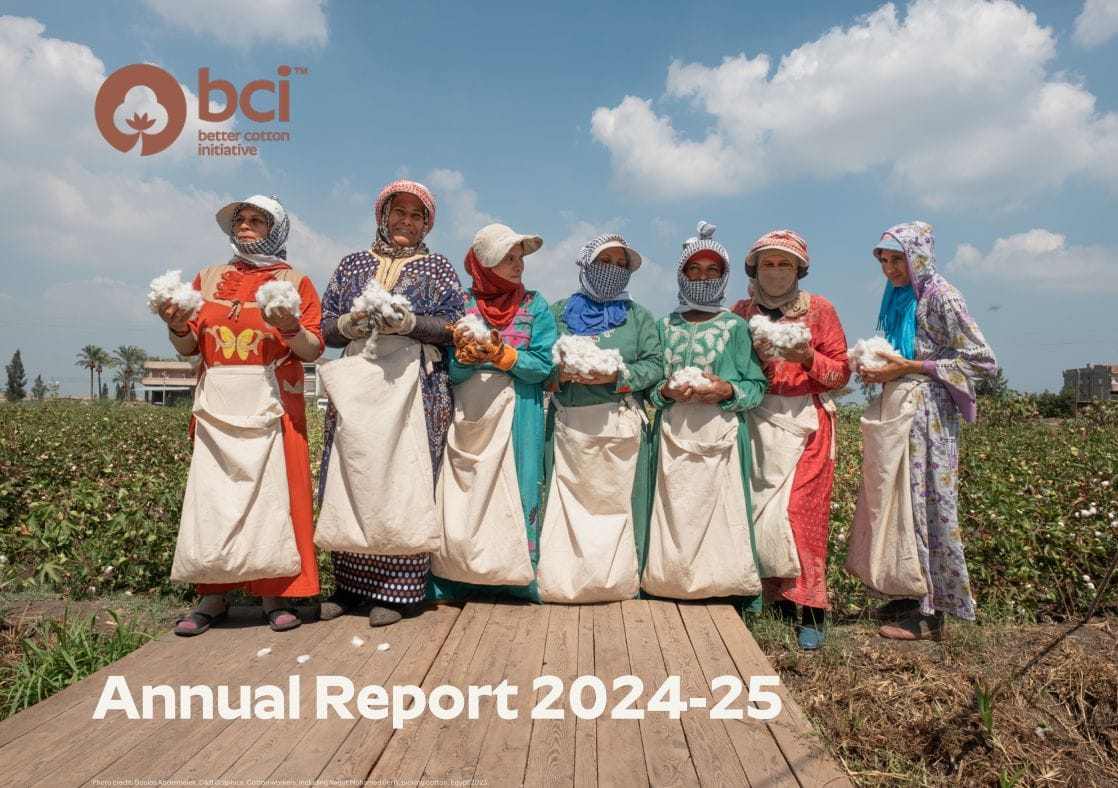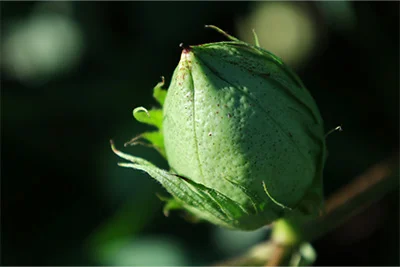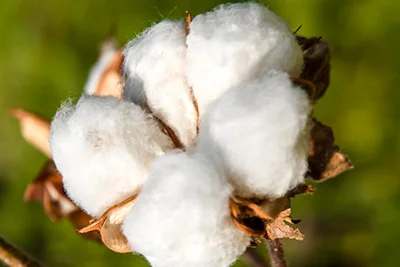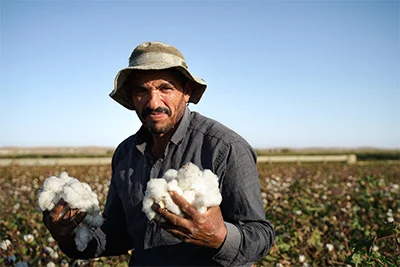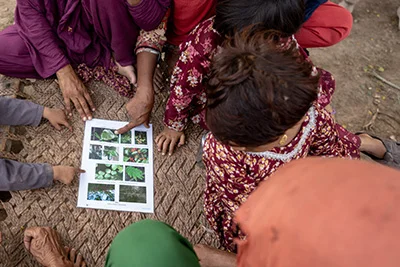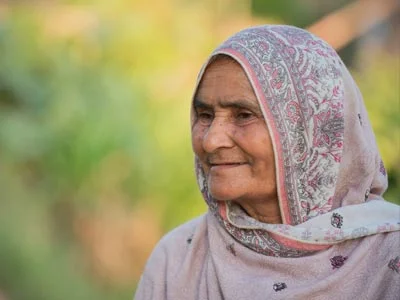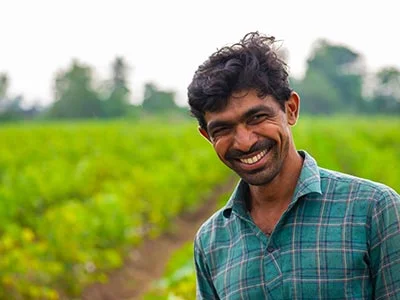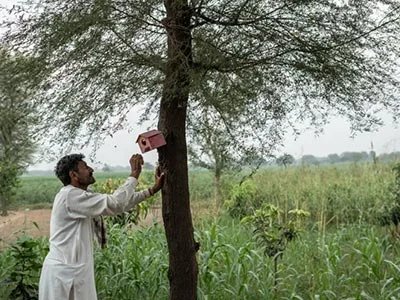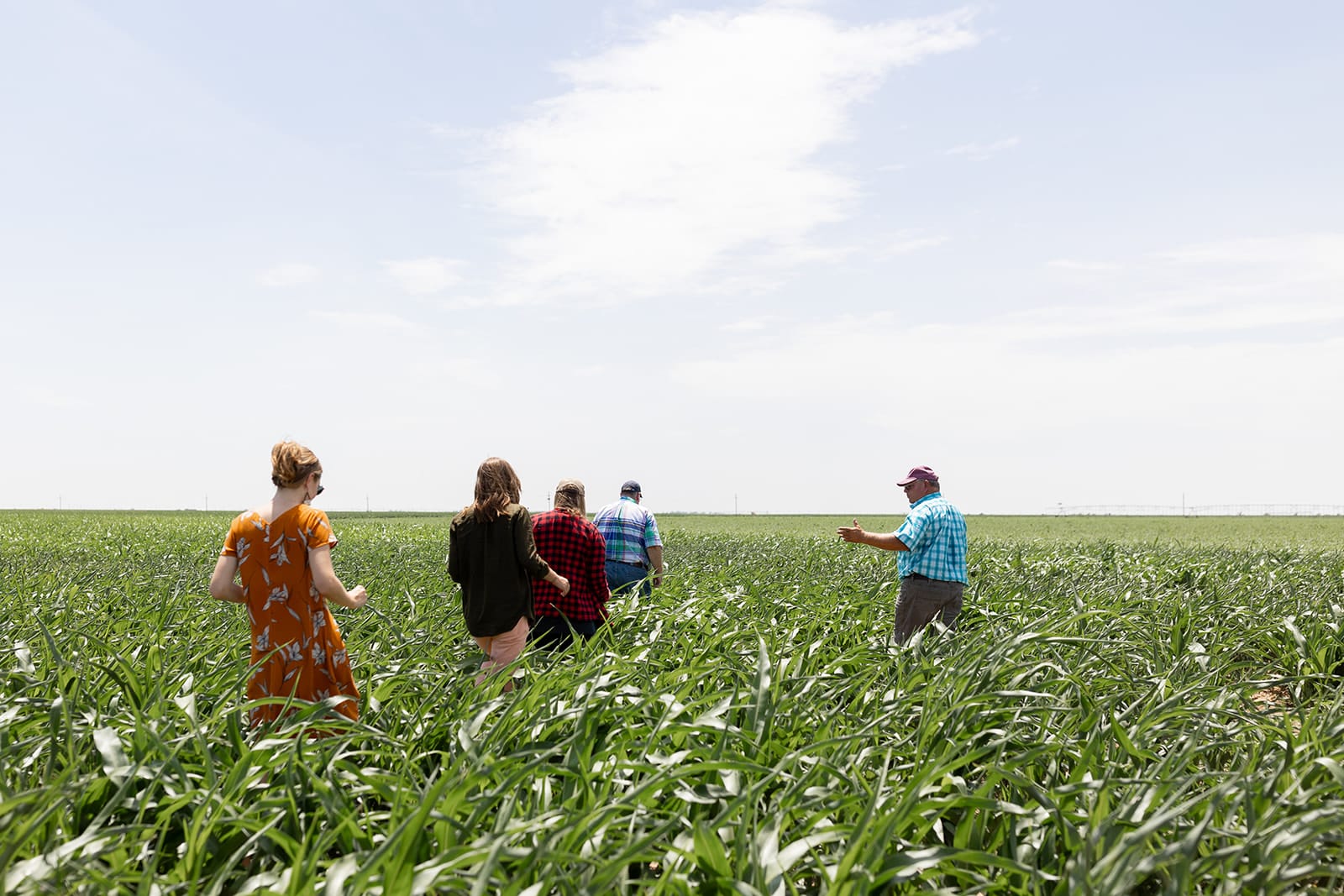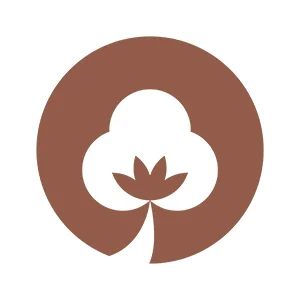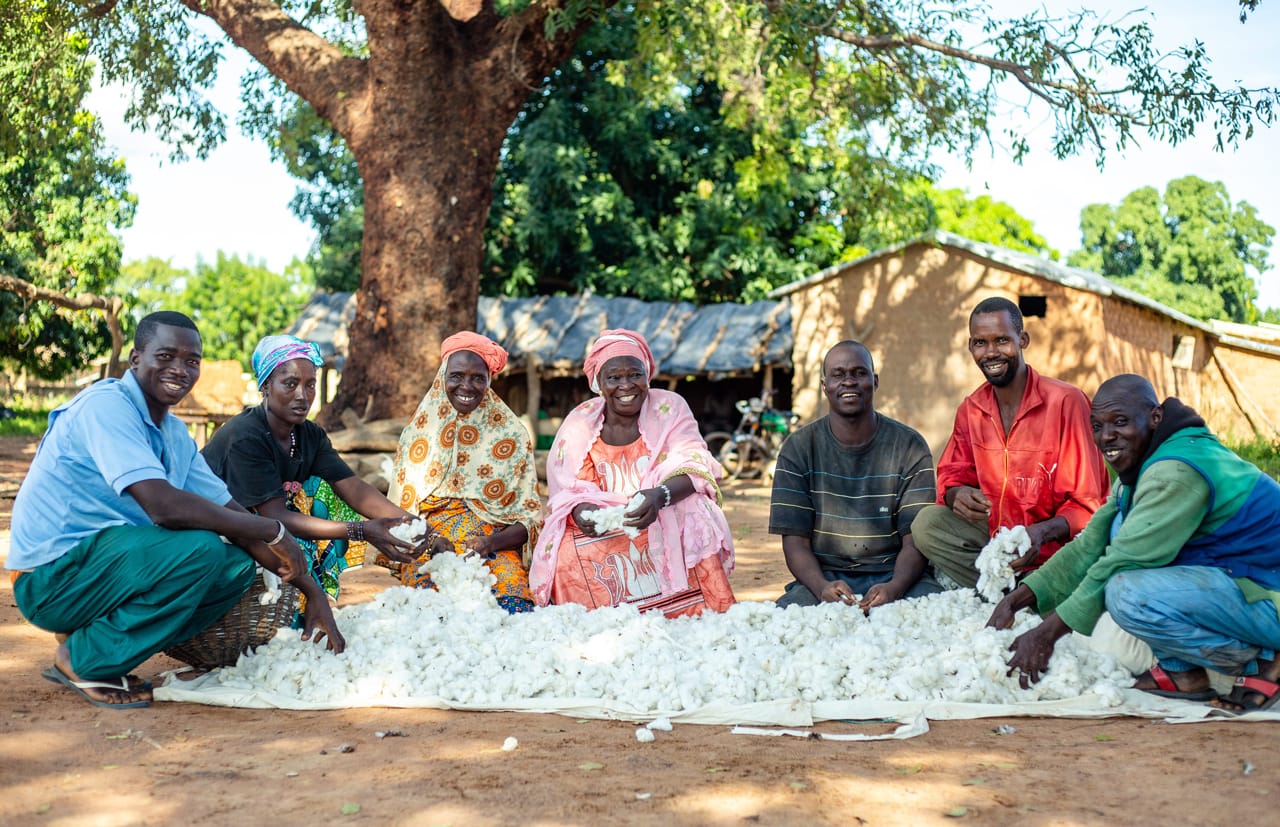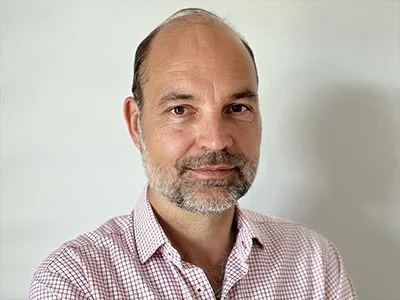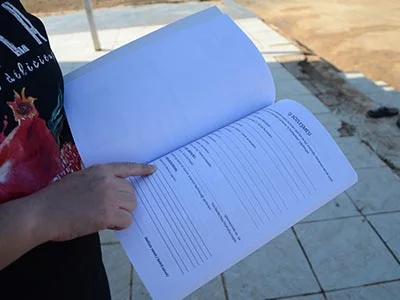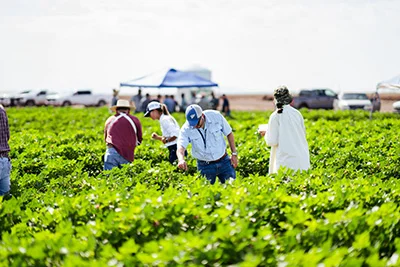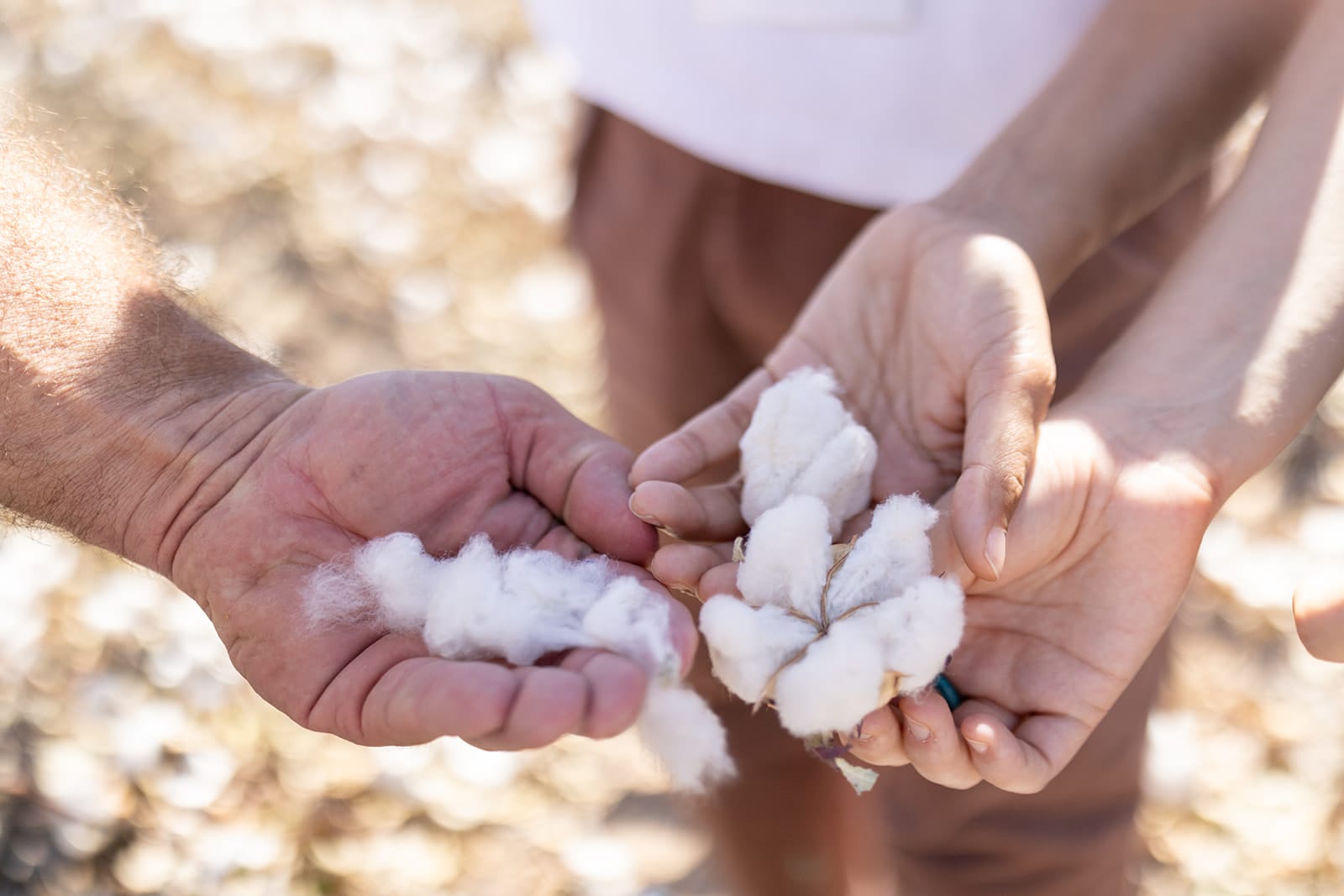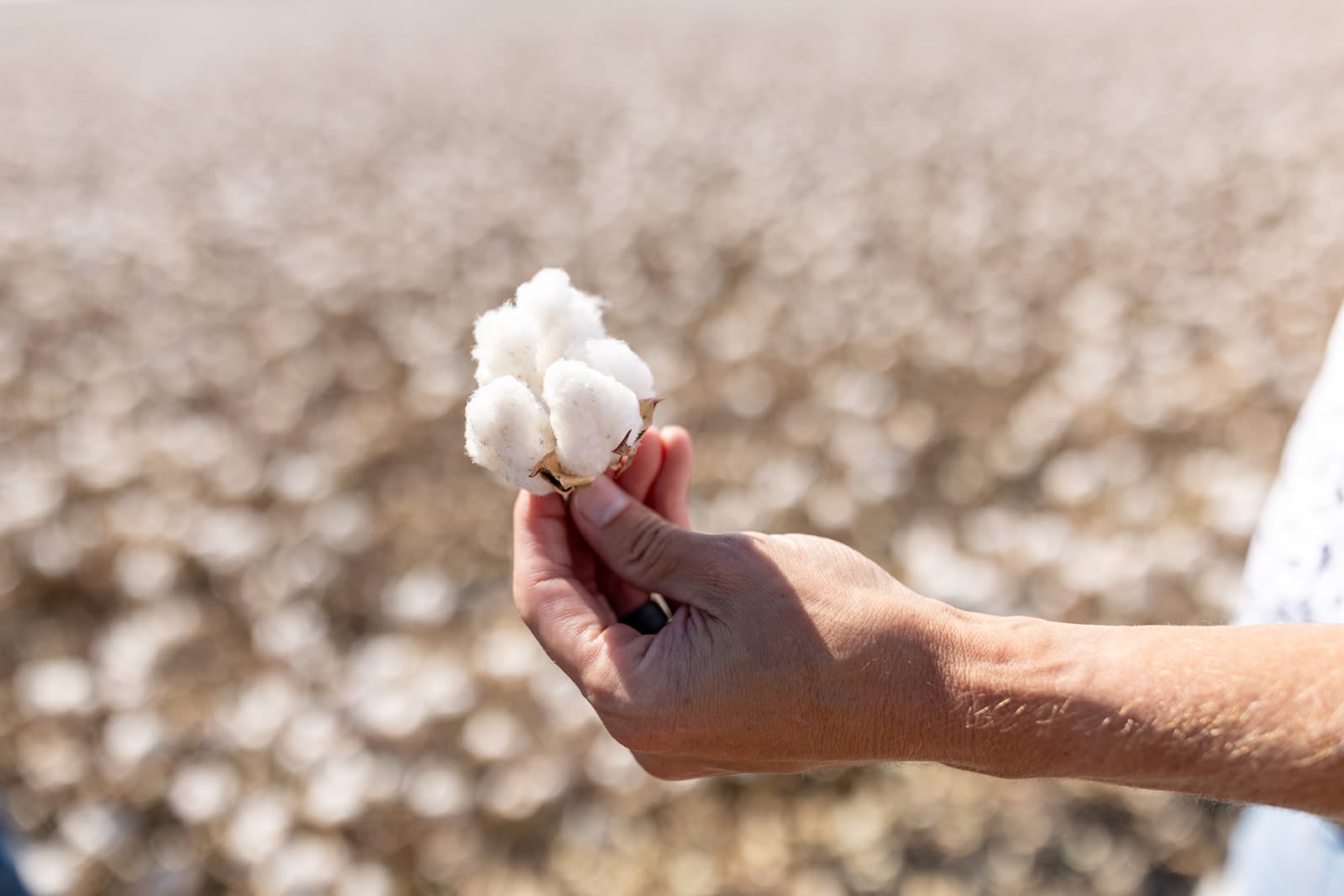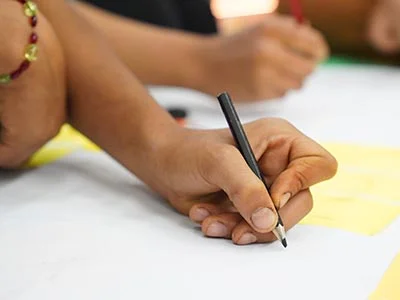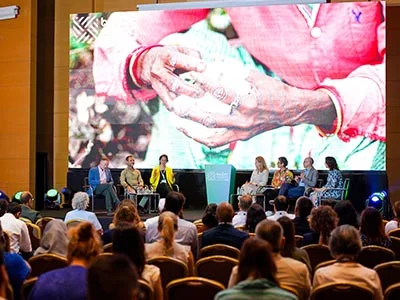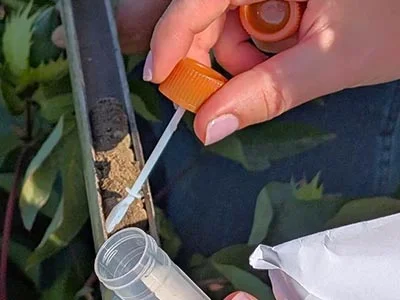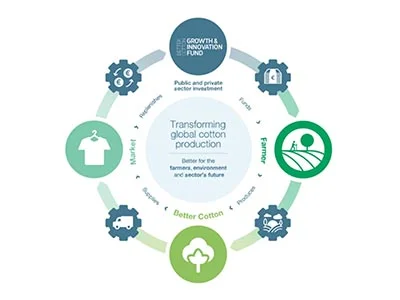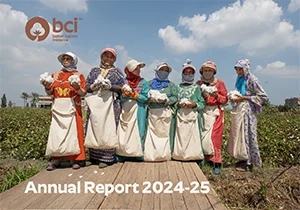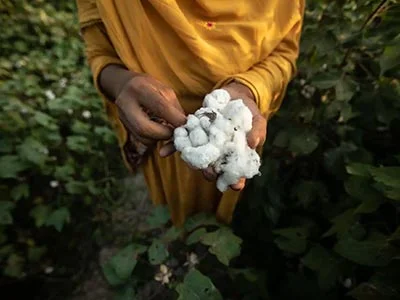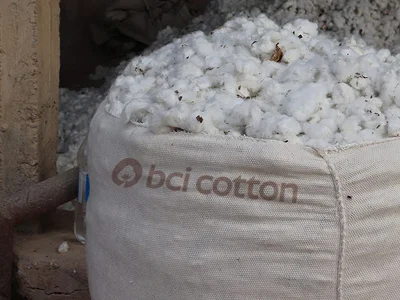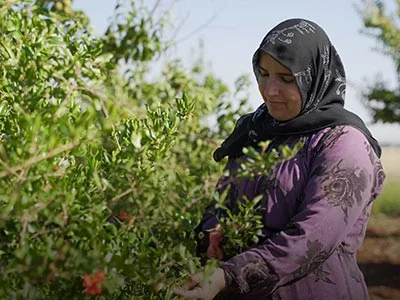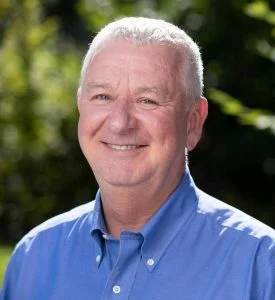

Today, on World Cotton Day, we are happy to be celebrating the farming communities around the world that provide us with this essential natural fibre.
The social and environmental challenges we came together to address in 2005, when Better Cotton was founded, are even more urgent today, and two of those challenges — climate change and gender equality — stand to be the key issues of our time. But there are also clear actions we can take to solve them.
When we look at climate change, we see the scale of the task ahead. At Better Cotton, we are drawing up our own climate change strategy to help farmers deal with these painful effects. Importantly, the strategy will also address the cotton sector’s contribution to climate change, which The Carbon Trust estimates at 220 million tonnes of CO2 emissions per year. The good news is that the technologies and practices to address these issues are already there — we only need to put them in place.
Cotton and climate change – an illustration from India
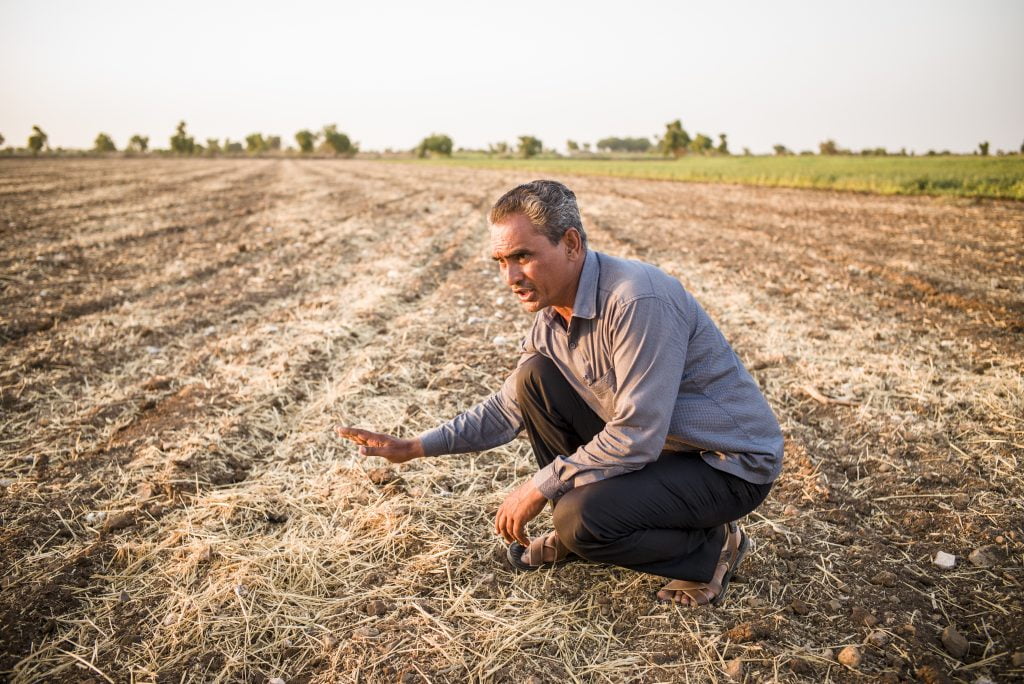

At Better Cotton, we’ve witnessed the disruption that climate change brings first-hand. In Gujarat, India, Better Cotton Farmer Vinodbhai Patel struggled for years with low, irregular rainfall, poor soil quality and pest infestations on his cotton farm in the village of Haripar. But without access to knowledge, resources or capital, he, along with many other smallholder farmers in his region, relied partially on government subsidies for conventional fertilisers, as well as credit from local shopkeepers to buy traditional agro-chemical products. Over time, these products only degraded the soil further, making it harder to grow healthy plants.
Vinodbhai now uses exclusively biological fertilisers and pesticides to produce cotton on his six-hectare farm — and he is encouraging his peers to do the same. By managing insect-pests using ingredients sourced from nature — at no cost to him — and planting his cotton plants more densely, by 2018, he had reduced his pesticide costs by 80% compared to the 2015-2016 growing season, while increasing his overall production by over 100% and his profit by 200%.
The potential for change becomes even greater when we factor women into the equation. There’s mounting evidence that shows the relationship between gender equality and climate change adaptation. In other words, we are seeing that when women’s voices are elevated, they make decisions that benefit everyone, including driving the adoption of more sustainable practices.
Gender Equality – an illustration from Pakistan
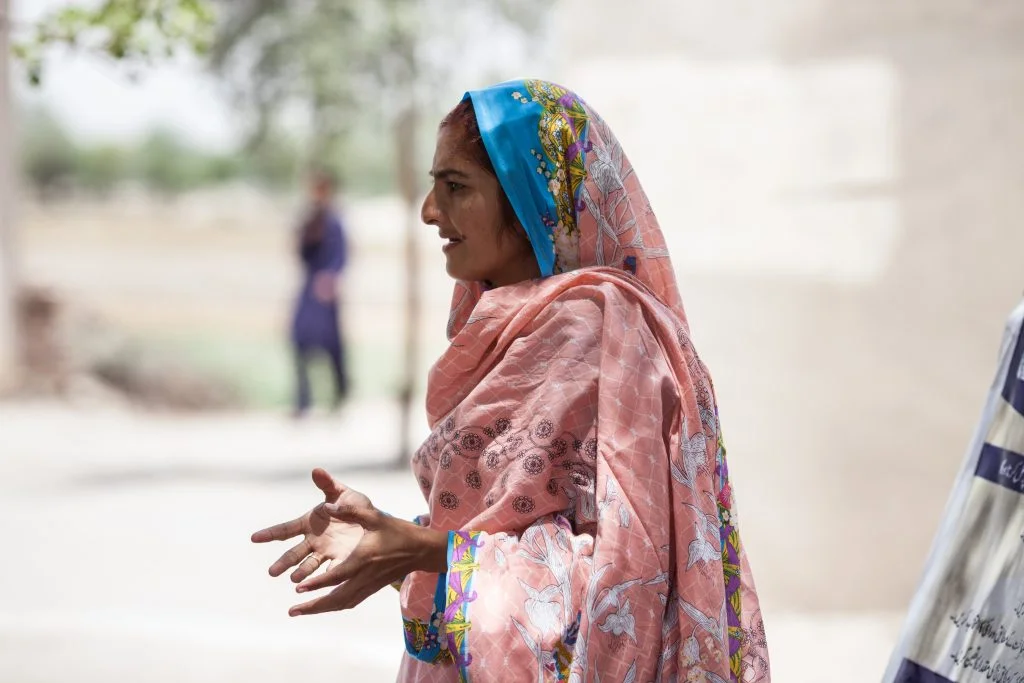

Almas Parveen, a cotton farmer in the Vehari district of Punjab, Pakistan is familiar with these struggles. In her corner of rural Pakistan, entrenched gender roles mean women often have little opportunity to influence farming practices or business decisions, and female cotton workers are often restricted to low paid, manual tasks, with less job security than men.
Almas, however, was always determined to overcome these norms. Since 2009, she’s been running her family’s nine-hectare cotton farm herself. While that alone was remarkable, her motivation didn’t stop there. With support from our Implementing Partner in Pakistan, Almas became a Better Cotton Field Facilitator to enable other farmers — both men and women — to learn and benefit from sustainable farming techniques. At first, Almas’ faced opposition from members of her community, but in time, the farmers’ perceptions changed as her technical knowledge and sound advice resulted in tangible benefits on their farms. In 2018, Almas increased her yields by 18% and her profits by 23% compared to the previous year. She also achieved a 35% reduction in pesticide use. In the 2017-18 season, the average Better Cotton Farmer in Pakistan increased their yields by 15%, and reduced their pesticide use by 17%, in comparison to non-Better Cotton Farmers.
The issues of climate change and gender equality serve as powerful lenses with which to view the current state of the cotton sector. They show us that our vision of a sustainable world, where cotton farmers and workers know how to cope — with threats to the environment, low productivity and even limiting societal norms — is within reach. They also show us that a new generation of cotton farming communities will be able to make a decent living, have a strong voice in the supply chain and meet growing consumer demand for more sustainable cotton.
The bottom line is that transforming the cotton sector is not the work of one organisation alone. So, on this World Cotton Day, as we all take this time to listen and learn from each other, reflecting on the importance and role of cotton around the world, I’d like to encourage us to band together and leverage our resources and networks.
Together, we can deepen our impact and catalyse systemic change. Together, we can make the transformation to a sustainable cotton sector — and world — a reality.
Alan McClay
CEO, Better Cotton

